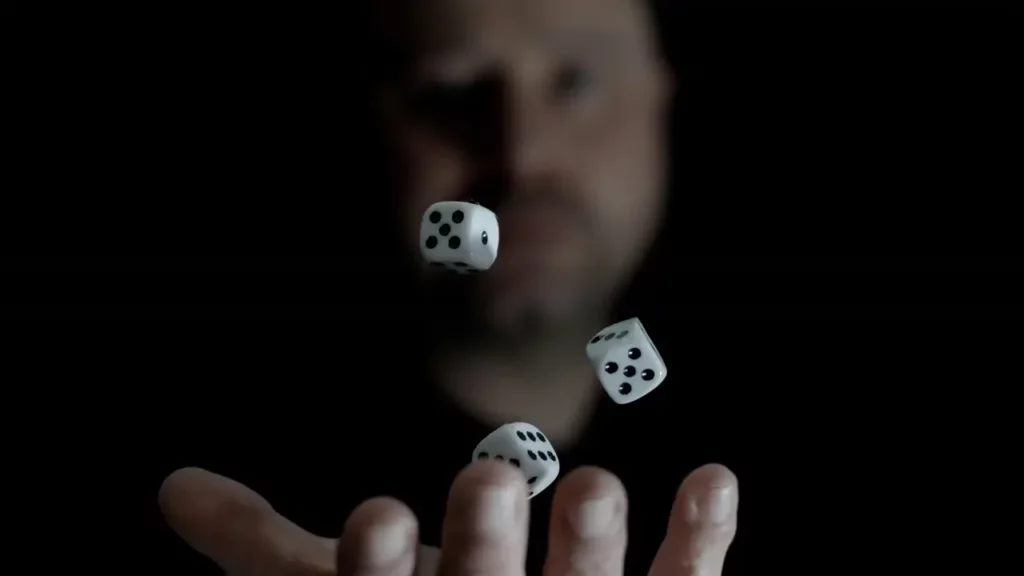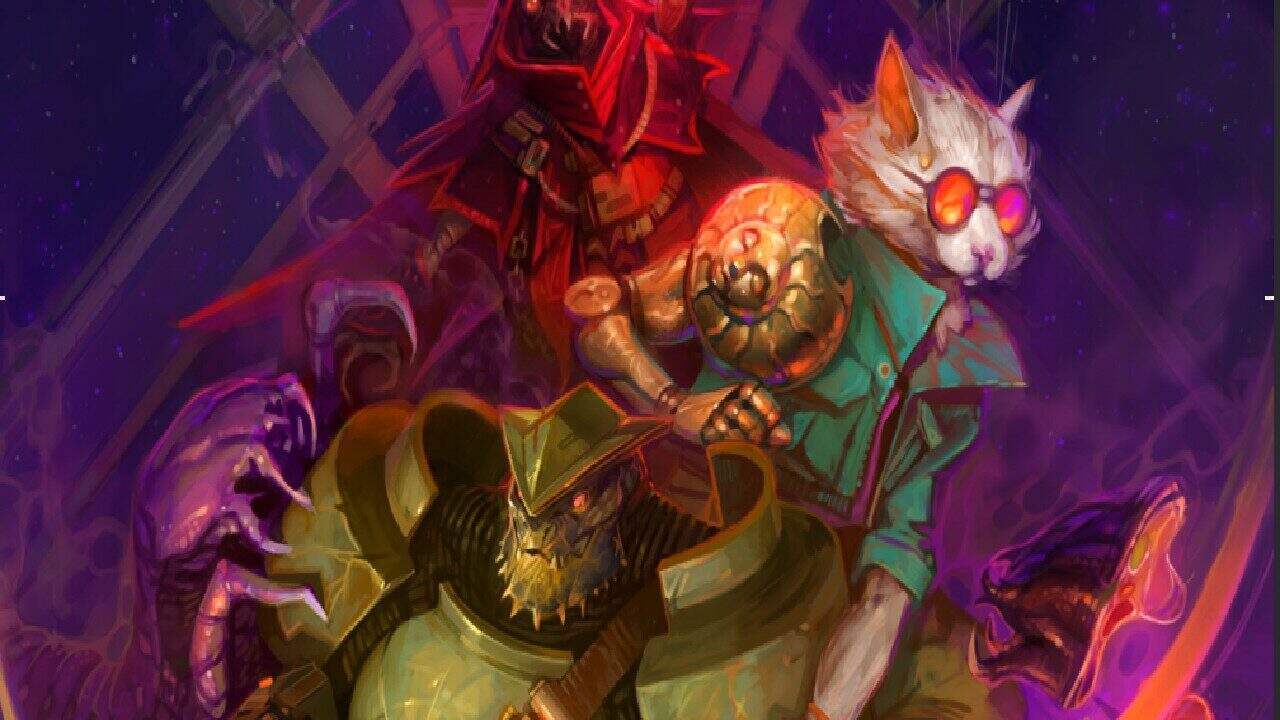
Solo RPGs are growing fast. Their origins go back to the 1970s with the first Choose Your Own Adventure books; however, their most recent surge in popularity is a result of the Covid-19 pandemic. People wanted more ways to have fun and enjoy the hobby. Solo roleplaying games were one answer. Since then, demand for games like Thousand Year Old Vampire and Five Parsecs From Home just keeps on rising. In fact, demand is so strong many games designed for group play like Shadowdark now have dedicated solo versions to try, too. Here's a look at why they are definitely worth trying, the huge range of games available, and tips on getting started.
Why Play Solo RPGs?

There’s no need to schedule for a group. There are many reasons for their popularity, but this is probably the biggest. Scheduling is often the final boss of tabletop roleplaying games. However, if a player has the time to play, a solo game is ready to go. Furthermore, games can run for as long as the player wants; a half an hour lunch break can work as well as a few quiet evenings.
Additionally, the experience often inspires new ideas. They flow differently to group games because the player is never waiting for someone else to make a move. The brain is always active, making gaming decisions, seeing the story grow. Solo systems offer players challenges and results that are not just fun, but often very surprising, too. And variety is essential to boost creativity.
Also, players can focus on what they want. With no group, there’s no worrying about taking too much time or attention away from other players. Solo games can explore characters and story events as fully as the player wants. This can also be a chance for introspection and stress relief; sometimes a bit of alone time is just what the body needs.
That said, solo RPGs also work very well alongside group games. Gamemasters (GMs) wanting inspiration can play out events for non-player characters that have an impact on the main story. Players, with GM approval, could explore solo events or backstory. Playtesting is another option for GMs, but I advise caution—no plan survives first contact with the players.
What Types of Solo RPGs Are There?

There are three main kinds: oracle-based, journaling, and tactical narrative games.
Oracle-Based Games
Oracle-based games feel the closest to the traditional tabletop roleplaying experience. In these games, a player chooses what events may happen and how their character(s) reacts. When the player does not know something, or wants to add some randomness, they use the oracle.
Oracles usually answer a simple yes/no question. For example, “Do the guards see me?” or “Is the monster faster than the party?” Most oracles use dice rolls to decide, but some use cards. The answers are similar to Powered by the Apocalypse results—i.e. a big success, success with a small complication, or failure/a big complication.
This makes oracles like the Mythic Game Master Emulator by Tana Pigeon very popular for system conversions. Playing both GM and player, people use the system’s rules as normal, but give control to the oracle when desired. This keeps play surprising and fresh. People can enjoy Dungeons & Dragons, Savage Worlds, or any other system by themselves and still have an exciting experience.
Some games have an oracle system at their core. The fantasy-based Ironsworn by Shawn Tomkin is specifically for solo and co-operative play. Characters have stats, assets—special abilities, companions, paths, rituals, combat styles—and goals, just like any standard tabletop game. Characters travel, investigate, prepare, or take a risk to achieve their goals. When needed, players use the system’s oracle to decide questions.
With its similarities to other tabletop games, Ironsworn was very easy to learn. Most importantly, it was a lot of fun to play, with a wonderful mix of mechanics and creative freedom. For those interested, there is an updated, sci-fi version called Starforged. Gameplay is more streamlined and story momentum builds faster than in Ironsworn, but the overall level of fun are about the same. Both are available for free here!
Journaling Games

Compared to oracle games, events in journaling games are much more controlled. For instance, in the game Lichdom, my character can encounter a terrible beast of great power; this isn’t my idea—it happens if I get the card seven of diamonds. However, I decide what the beast is and why my character is encountering it.
In this way, journaling games focus the player’s creativity on expression. This can build very personal or emotional narratives. As characters progress through their lives, players record the history in diary entries, letters, or mission logs. The range of experiences and variety of games available are too huge to cover completely. However, to give some idea of what’s on offer, here are a few I have tried.
Games For Everyone

In Chris Bissette’s The Wretched, the player’s character is alone on a spaceship, hunted by a creature. The character’s only hope is to launch a distress beacon before the ship falls apart or the creature gets inside. The game uses a deck of cards (and optionally a Jenga tower to represent the ship’s integrity). I’ve tried this game four times, and never succeeded. Survival is unlikely, but the increasing tension and event prompts are brilliant.
Thousand Year Old Vampire by Tim Hutchings is completely different. It’s a slow game, full of introspection, questions about identity, and how memories shape people. The game uses dice and a system that forces players to choose which memories to keep, and which to lose. The tone is very dark. There’s almost no way to play a “good” vampire—trying, by design, will be tragic. The system is clever, gameplay is intense, and it’s unlike anything else I have played. This all made it a lot of fun. However, the intensity means it’s not really a game to quickly replay for me.
They Are Not All Dark!

Anna Blackwell’s Apothecaria is a very cosy, relaxed game that feels like a Studio Ghibli film. The low tension makes it really easy to start and stop as needed. The player treats people and monsters with potions. Using a deck of cards, the player generates patients and their illnesses; then, they choose a location to explore and try finding necessary ingredients. Complex patients, potion brewing complications, and many random events during exploration give a lot of replay value.
Lastly, I mentioned solo games can work well with group games. Lichdom by Adrian L. Sanjuan is brilliant for this. Using dice and a deck of cards, it creates a sorcerer’s attempts to become a lich. This was perfect for making a villain for one of my D&D campaigns. It created Jarok the Dawnmaker—a villain complete with motivations, past successes and failures, allies, rivals, and important locations. It makes fantastic worldbuilding material, even if the sorcerer fails. Additionally, it’s easy to swap becoming a lich for other villain types.
Tactical Narrative Solo RPGs

Tactical narrative games are half tabletop roleplaying game and half wargame. They still need creativity and have freedom of expression, but the focus is much more on making important decisions. Five Parsecs From Home by Ivan Sorensen is a great example for this style of game.
In Five Parsecs, the player takes control of a small group of sci-fi characters. These all have stats, skills, traits, and backgrounds. In many ways, it plays a lot like a West Marches type of game; it’s a sandbox, with locations, factions, enemies, and missions all generated procedurally. Characters will change as the game progresses; however, similar to Shadowdark, their individual stories probably won’t be the focus; the bigger story is the narrative of the group.
Narrative Framework, Miniature Combat

These types of games often use miniatures, and combat is very tactical, which will appeal to some more than others. It’s worth noting Sorensen’s solo RPGs are famous for their emphasis on simplicity and narrative. Gameplay splits into three main sections: preparation, combat, and consequences.
This gameplay flow will be very familiar to many traditional tabletop roleplaying gamers. The player chooses what rumour or job they want to try and then go on a combat mission; afterwards, they get rewards, perhaps level up, deal with narrative consequences, buy new gear, pay for upkeep, and then repeat.
Each time, the rumours, enemy forces, objectives, and combat conditions (e.g. weather), are all random; this means the story is always moving in exciting directions. The player is always free to choose something if it would make more sense or be cooler, though. Like any West Marches game,the story continues until the player chooses to stop at any point. For an example of a really dramatic finale, I recommend Trevor Devall’s Me, Myself, and Die campaign.
There is a fantasy version called Five Leagues from the Borderlands. For a more narratively structured game, Joseph McCullough’s Rangers of Shadow Deep might be better. However, for keeping me constantly thinking, generating fun surprises, and making emergent storylines, Five Parsecs was brilliant for me.
What Do You Need to Start Playing Solo RPGs?

Pen and paper! Of course you can use your word processor of choice; however, seeing a notebook become the story that grows through play gives a lovely feeling.
That’s basically it.
To help build atmosphere, music is always a nice option. I’ve enjoyed using the creepy Derelict Ship with The Wretched, the much more peaceful The Duchess for Apothecaria, and Risky Battle fits just about any combat I have. Whatever boosts immersion or creativity is certainly worth adding.
Here are some general tips for play:
- Enjoy the randomness. As a forever GM, it felt a little strange letting the story prompts or oracle guide the action in the beginning. However, the surprises and plot twists have been great inspiration and made some amazing original stories, too.
- Don’t worry about the story being “right.” Let things play out and see where they go. Players can always take total control if they think the experience would get a lot better from it; however, just like playing with other people, events will go in unexpected directions—and often that’s really cool!
- Play the way that feels the most fun. There is only one person to make sure is having fun. Pick the game that feels the best. Some people enjoy short sessions of 10-20 minutes; others will like much longer sessions. Find what works.
For anyone looking for inspiration, I highly recommend Trevor Devall’s channel. He was one of the first to showcase how much fun you can have with solo roleplaying games. Besides Five Parsecs, he has a campaign for Savage Worlds, Ironsworn, Dominion Rules, and The Broken Empires—his own game. Everyone has their own style, but he shows just how much narrative and drama these games can create.
Solo RPGs Are Worth Trying

Solo roleplaying games let people play this hobby in a new way. They get to try being both GM and player. With little to no prep and no schedule concerns, it’s very easy to try. There is a massive range of genres and experiences available to play. Combining this with the chance to get new and exciting story moments, makes playing solo roleplaying games well worth consideration.



